The Strongest Evidence Yet That Major Media Outlets Fail in the SARS-CoV-2 Origin Question
How large media outlets hyped an obviously flawed report before it was even published
brief disclaimer:
Valentin Bruttel, PhD in immunology, focus novel targeted therapeutics/bioengineering.
I have no conflicts of interest, do not receive any money for reporting on SARS2, substack free to read. wrote and investigated this in my free time. opinions are my own, not my employers. everything reported to my best knowledge, but I could obviously be wrong, corrections very welcome! if you liked this, please consider supporting biosafetynow.org, I trust these people.
updates from march 24 marked with a *
Raccoon dogs in Wuhan
There is actually an interesting back story about raccoon dogs in Wuhan. According to some reports, the draft for the WHO commission report stated that 91 raccoon dog samples were tested negative for SARS-CoV-2. This would have pretty much ruled them out as an intermediate host. For reference, the intermediate host for MERS are camels, of which 76% have antibodies against MERS. However, the final WHO report mentions 91 “minks” here…



It was known that raccoon dogs were sold at the Huanan Seafood Market, although it is a bit unclear until when. But we should keep in mind that at least DNA can stay intact for centuries, mummies and mammoths have been sequenced.
A new preprint with Huanan Seafood Market sample analyses
George Gao, former head of the Chinese CDC, and his team sequenced samples from the Huanan Seafood Market (HSM) that were collected in January of 2020 after the market was closed. As expected, they did find reads of various animals, humans and SARS-CoV-2 (SARS2). They submitted a preprint for review *already in February 2022 (who was delaying this publication for so long???) that came to the following conclusions:
- no ancestral or divergent SARS2 lineages were found at the market
- all 457 samples taken directly from 188 animals were negative for SARS2
- SARS2 RNA found in environmental samples correlated significantly with human nucleic acids
- vendors selling vegetables were more often tested positive for SARS2 than vendors selling wildlife products
That was it. A robust preprint, certainly very late and questionable if everything was transparent as from post-pandemic CCP controlled China, currently under review, raw data not yet available. Nothing unusual.
Media reporting on the preprint
So how did journalists report on this? They pretty much did not react to the preprint or the data all as far as I know. A preprint about samples and sequences in the middle of a review process is apparently not a good story.
What likely happened next
A nervous reviewer
I do not know this, but it is very likely that one of the western virologists that collaborated with the WIV or did his own dangerous Gain of Function research was asked to review the Gao paper. He/she likely realized that the Gao paper would lead to very unwelcome headlines. Given the ongoing congressional hearings, both the FBI and US Department of Energy stating that a lab origin of SARS-CoV-2 is more likely and more and more highly problematic emails being FOAIed, the respective headlines caused by such a paper accepted in nature were clearly not welcome by many virologists involved in gain of function research or collaborating with the WIV. So when Gao’s group was asked to upload the raw data to a database called GISAID during the review process, which apparently has some raw data hosting capabilities not accessible to all users, they did not use that data to correct the paper, but to try to cherry pick anything they could find, blow it up and sell it to the press before the Gao paper is accepted.
However, according to Florence Débarre, she just stumbled accross this data by pure chance at exactly the right moment. I don’t know what happened, but Débarre and her coauthors have just been blocked at GISAID.
Stories and names trump data and plausibility
They may have speculated on science reporters to not ask for statistics, conflicts of interest or hard, testable evidence. On them propagating any emotional, entertaining story if someone with a title backs it up. Adding some complex sounding methods always helps to make it sound scientifically credible. The same ingredients have worked since the 1835 Great Moon Hoax.
This time, the ingredients were a very cute animal that can be printed on every cover, a photo from 2014, of cause the terrible pandemic and then some suspense elements like deleted data.
Did the VW cheat device or church child abuse cover up desasters teach these journalists that domain experts can have conflicts of interest? Did 20 Mio deaths motivate these journalists to do some background checks or to wait for data before spreading a story? Let’s see.
About the authors
Some of the virologists involved here have with very important and again undeclared conflicts of interest. In 2018, Eddie Holmes uploaded a large part of a viral genome together with Shi Zhengli that was, on protein level, 99.5% identical to SARS2. The rest of this genome was only uploaded after the pandemic, so can’t really be trusted.
Then there is Kristian Andersen, who’s old tweets magically auto-deleted, and who also wrote the “proximal origin” paper which pretty much declared a lab leak to be a conspiracy theory. In private emails, the authors found the SARS2 genome “inconsistent with expectations from evolutionary theory”, “potentially engineered” just days earlier. We never learned which robust data made them change their minds.
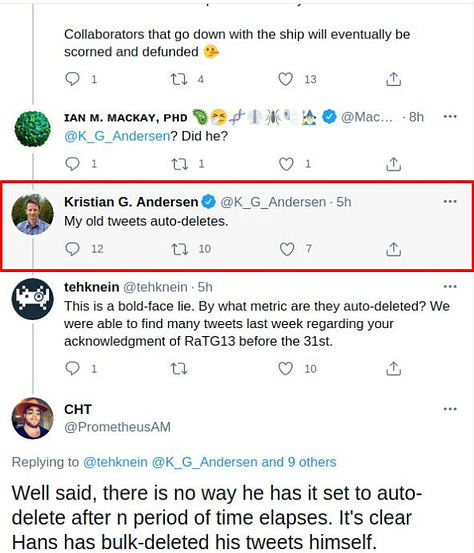


Another major problem: most of the authors here are not just scientists, but known to be paid for activities vaguely described as providing “expert testimony on SARS-CoV-2”. That could, in theory, include writing reports like this one. We do not know how much they are paid, for what exactly, or by whom.
Reporting on the rumors
Speed was essential here, as the preprint may have been close to acceptance, and the first story always travels the furthest. Corrections are usually read by far fewer people. And no newspaper likes to print them just days after an incorrect title story.
Anyway, at this point, some of the authors leaked to the press that they had found both raccoon dog nucleic acids and SARS2 RNA in a sample from the Huanan Market. That was it. They didn’t share any sequencing data, they didn’t say when this sample was taken, if it was a genome ancestral to the ones found in humans, if it was raccoon dog RNA or potentially 10-year-old DNA, they did not provide any statistical analyses, no paper, no preprint, nothing scientifically sound or testable. Nothing that could be considered to be science. This finding is not very surprising for a scientist, given the many SARS2 infected visitors, that raccoon dogs were at the market at some point, and that many samples were taken. *According to this paper, raccoon dogs were sold at Wuhan markets until Nov. 2019:
It would have been of relevance if the raccoon dog samples had for example more SARS2 RNA than other samples, but this was not known. However, lay people had heard about raccoon dogs before. The media got a cute animal, methods sounding like complex science, and some names to back it up. The story exploded:
I was asked what I thought about the story back then, and couldn’t really answer, as there were just no facts to assess. Hundreds of headlines based on nothing but some rumors.
A highly problematic “report”
A few days later, at least a report was published.
The key finding was that one sample out of hundreds contained SARS2 RNA and no human contigs (=longer, assembled nucleotide sequences), but many from raccoon dogs.
The authors said they will not publish this as a scientific paper, which is a big red flag. Lets try to peer review why they may not want this report to be peer-reviewed.
The “earliest cases where at the market” myth
That’s just wrong. According to Ben Embarek, the “preponderance” of likely thousands of early samples were never sequenced. Patients connected to the HSM were just always sequenced, as a connection to the animals sold there seemed plausible. The first Dec. 1 patient had no connection to the HSM. All we can really say is that the HSM was a sampling hotspot. The samples were clearly not ancestral.
The “most SARS2 found where animals were sold” myth
This is wrong again. The areas where animals were sold were just the areas where most samples were taken. The highest rate of positive samples was pretty much exactly where the toilets were. *And the quite small, likely badly aired Mahjong rooms. Where a few of the infected vendors liked to meet and to gamble.
The “original SARS2 can infect raccoon dogs” myth
It is simply not known if the original SARS2 strain was able to infect raccoon dogs. SARS2 evolved a very important spike mutation fairly early on, which was D614G. We know for example that this mutation enabled SARS2 to infect minks.
In contrast to thousands of other wild animals, wild raccoon dogs were never found to be infected with SARS2. The only study ever that found raccoon dogs to be susceptible to SARS2 did not use the original Wuhan strain to infect the animals, but one with D614G. According to the very friendly and responsive first author Dr. Freuling, this was the only strain they had access to, and they didn’t expect the few mutations to make a big difference back then. I find this plausible, but it should have been clearly communicated as an important limitation. However, even with the D614G mutations, 3 of the 9 raccoon dogs which got 2ml of virus solution pipetted directly into their noses did not get infected. None got severe symptoms as we now see in many animals with bird flu. And the viral titers from nasal swaps were very low, about 5x10^5 copies/ml max, which is about 100,000 fold lower of what is detectable in human nasal swaps with similar variants (more than 10^10 copies/ml). It is thus an open question if raccoon dogs can be infected with original SARS2 at all, and even more so if they titers would have been sufficient for continuous transmission and transmission to humans.
The big “very low viral load in raccoon dogs” problem
Viral loads are very important here. If the viral load in humans is 10-100,000x higher than in raccoon dogs, environmental samples containing 10-100,000x less human than raccoon dog nucleic acids could theoretically still contribute the same amount of SARS2 RNA.
So just finding more raccoon dog than human nucleic acids in an environmental sample does not prove anything.
Some well-informed anonymous virologists noticed that there were also cow and sheep samples (not susceptible to SARS2) containing SARS2 and no human read contigs.

The “almost no SARS2 RNA” issue
The one sample in question here (Q61) contained virtually no SARS2 RNA. It was negative in 40 / 45 cycles of rt-PCR. The same was true for sample 70 from that stall. Next generation sequencing was needed to find SARS2 RNA. One would expect a sample with that much intermediate host nucleic acids to contain way more SARS2 RNA, which was certainly not the case.
The “zooming out to not show human reads” issue
The Débarre Report *based it’s most important Figure 3 on so called “contigs” of an arbitrarily chosen length of 300bp. No human contigs of 300bp were found in this one sample Q61.
DNA sequencing produces much shorter individual “reads”. If those overlap, they can be assembled into longer so called “contigs”.
The Q61 sample was PCR negative, thus likely did not contain much SARS2 RNA.
*
Their supplementary data tells us that there were human reads in Q61, about 580x less than raccoon dog reads. Given the >10,000x higher viral loads in humans than in raccoon dogs, it’s ~20x more likely that the SARS2 RNA in that sample came from a human. It also tells us that the two PCR negative samples from this stall contained very few human reads. And it takes a lot of imagination to consider it more likely that a caged raccoon dog and not a human got SARS2 on the floor, 2 carts, a machine and a container in another room…
The massive “human nucleic acids were removed” problem
The Débarre Report states “the exact experimental procedure used to generate these data is uncertain”.
However, the Gao paper that collected these samples clearly states that human nucleic acids were removed, which is often done to find more rare sequences. This usually does not remove all reads, and may also remove some animal reads. I do not know which method was used here exactly, but it is very plausible that such a protocol removes easily accessible human nucleic acids from sputum/saliva, while it does not remove nucleic acids from animals that come from blood or meat, where DNA is “baked” into fibrinogen (DNA in blood samples at crime sceenes is often much more stable. credits: @Daoyu15). The entire Débarre report is built around finding SARS2 nucleic acids in the absence of human ones, so it is absolutely critical to mention that human nucleic acids were removed. How could they miss that Gao et al explicitly mentioned this extremely important piece of information?
A long list of incorrect statements
The rest of the report repeats incorrect talking points that prove the authors are terribly informed with regards to SARS2 origin evidence.
I recommend a self-test here:

see also:


The relevant points in the Débarre report
We did learn
- which species of raccoon dog and some other animals were at the market at some point
- Chinese politicians/scientists are again not sharing/ deleting important information on the origin of SARS2.
IMO all the raw data should have been made publicly available 3 years ago!
There has just been no political pressure to do so, with the exception of Australia, which was subsequently punished by sanctions.
Intermediate host features the Débarre report does not mention
We now went through how problematic the cherry-picked results of the Débarre report are. We still need to talk about what other criteria define a plausible intermediate host that they did not mention at all.
As discussed, intermediate host should be very susceptible to be infected with a virus, which is not likely the case for raccoon dogs and SARS2.
Intermediate hosts should harbor an ancestral genome that is highly related to the human virus, yet slightly more similar to viruses found in the wild. And it should be understandable how the virus got into that host. Ideally, the sample should have also been collected before a major outbreak or far away from potentially infected humans.
This pandemic likely started Sept/Oct 2019. The environmental sample with the raccoon dog nucleic acids in question here was collected Jan. 12, 2020. It was also negative in the PCR, so likely contained relatively little SARS2 RNA.
We don’t know the full SARS2 sequence here, but nothing indicates it is in any way ancestral or not identical to genomes found in humans.
Raccoon dogs are also often farmed north of Wuhan for better fur quality, and not 1500km south of Wuhan where SARS2 related bat coronaviruses were found.
The intermediate host who checks these boxes
In contrast to this overhyped report, Csabai & Solymosi found a potential intermediate host that has all the here missing features more than a year ago:
- SARS2 genome ancestral to all human lineages
- a highly susceptible host (Vero cell line. But some human DNA was also found)
- an uncertain, but certainly earlier sequencing date
- detailed explanation how the virus got there, which even mentions the sequencing facility.


Robust, reproducible, elegant science. No conflicts of interest. But also no cute animal pictures. No virologists hyping the story. So no major newspaper reports, at least AFAIK.
**What the data actually indicated
When the data was finally released, Prof. Jesse Bloom wrote a comprehensive article about what it actually indicated. Every single sample with SARS-CoV-2 reads also contained human reads. Raccoon dog reads negatively correlated with SARS-CoV-2 reads, which strongly indicates these animals were not the source of the virus at the market. There were positive correlations for several species of fish, which are not susceptible, which further highlights that no robust conclusions regarding animals can be drawn from the data.
Furthermore, the distribution of raccoon dog (Nyctereutes) reads did not at all match the distribution of SARS-CoV-2 reads (green).
***2024 Update: Journals and newspapers keep misleading their readers
This embarrassingly misleading story got finally published in Cell in 9/2024.
Almost none of the obvious errors addressed above were fixed, so lets just have a quick look at these “highlights”: 1: Common ancestor of SARS-CoV-2 linked to Huanan market matches the global common ancestor
They added another phylogenetic analysis which finally admits that A is the more ancestral lineage, and completely contradicts what the same authors had published in 2022. They keep misleading their readers here by staining the “pandemic most recent common ancestor (MRCA)” in read, which implies that it was found at the market, which is incorrect. As mentioned above, such an ancestor was found with lab cell line DNA. And the samples collected at the market were not closely related to such an ancestor. So this is misinformation.
We have discussed “highlights” 2: “Wildlife mitochondrial DNA identified in samples from stalls positive for SARS-CoV-2” and 3: “DNA from raccoon dogs, civets, and other wildlife species detected in market samples” before, nothing new here. Prof. Bloom had shown that wild animals were almost certainly not the source for the SARS-CoV-RNA. Needless to say that this was not discussed in the Cell paper.
So let’s look at “highlight” 4, which is new: “Genotypes of potential hosts were reconstructed for retracing animal geographic origins”. What they found is that the raccoon dogs sold in Wuhan had some genetic similarities with raccoon dogs sampled in Hubei province (dark and light red mutations).
Quick reminder: Wuhan is the capital of Hubei province. SARS-CoV-2 related viruses were found in Yunnan and Laos, very close to Vietnam.
Raccoon dogs from Vietnam had a very different genetic background from those sold at the Wuhan Seafood Market. So the raccoon dogs sold at the market were from the direct vicinity of Wuhan, and not genetically similar to raccoon dogs from Vietnam, which is close were related viruses circulated. In other words, this indicates that SARS-CoV-2 did not get to Wuhan via an infected raccoon dog, which is strong evidence against a zoonotic origin.
So - how do newspapers report on these new findings? By printing the opposit of the truth, that this would be evidence that the pandemic started at the market…
ps: I just found a great X thread by “Dissenting Skeptic” after writing this update, which comes to very similar conclusions and discusses a few additional points.
*Concluding summary
This very brief review already shows that there are massive problems with this report. There is strong evidence that raccoon dogs are not susceptible at all for the original SARS-CoV-2 variant. have been infected, varrying viral loads were ignored, the fact that human nucleic acids were removed was ignored, so it is very unlikely that even this one cherry-picked sample came from an infected raccoon dog. And even if it did, it could have been a reverse zoonosis, a raccoon dog infected by one of the many infected visitors or vendors. The entire report as well as how details were pre-leaked to the press is shockingly unscientific and misleading. It should be immediately withdrawn and completely rewritten.
The reaction to criticism
I first put most of these points into a thread and send it to Florence Débarre.
Her only reaction was to block me.
The failure of large media outlets in virus origin reporting
My job is to develop novel therapeutics for autoimmune diseases, which requires sometime using methods similar to those used to make synthetic viruses. We’ve had recent breakthroughs showing that we can selectively inhibit various immune diseases in mice, our platform may even be helpful for some long covid cases. I will soon go back to working 100%, to fully focus on this amazing tech instead of writing such reports at night. But GoF research remains an enormous threat to my family, my team, my friends, all of our lives. It has almost certainly let to SARS2.
Why are European politicians and pandemic preparedness agencies not even offering to have a 15 minute phone call when 18 scientists warn them that something is off here?
There are many smaller media outlets that did not spread this highly questionable origin story, instead waited for data, questioned and FOIAed scientists, did an amazing job in this pandemic.


But IMO most larger media outlets are massively failing when it comes to reporting on the origin of SARS2. Failing to ask for COIs, for evidence, for verifiable facts. Failing to investigate even the mostly easily accessible information, such as the issues I listed here. They keep spreading misinformation. Even an incorrect, sensational headline with limitations added in the small print is still misinformation, 80% of readers may not read past headline. Why can’t they just ask a well known scientist with opposing views like Richard Ebright for his opinion before printing such reports? Or a non-profit organization such as Biosafety Now?
The only reasonable reaction to change such behaviour is to cancel all subscriptions with/ignore the webpages of these media outlets and to tell them why you do so.
In many cases, I directly told the journalists like Sascha Karberg of the Tagesspiegel about these massive mistakes in their articles. There was no reaction.
Same with science bloggers like Lars Fischer, who often writes for Spektrum der Wissenschaft. Nothing.
I send a long list of technical Errors to the science reporters from Die Zeit who wrote about this story.
https://twitter.com/VBruttel/status/1644519795969105924?s=20
Claudia Wüstenhagen just removed the link to the article from her twitter timeline, Florian Schumann blocked me. Not one misleading statement in their article was corrected.
I had a long email conversation with Hanno Charisius of the Süddeutsche Zeitung, from which I am not allowed to quote. He had completely made up the headline, in which he said “genetic data indicate SARS-CoV-2 jumped from animals to humans”. There was absolutely zero data when wrote this. He stopped responding to my emails once I had sent him the full list of obvious mistakes.
**Bitter conclusions
A group of virologists just went through a pile of data, cherry-picked the one sample that fitted with their preferred narrative, and gave highly misleading interviews (Prof. Angela Rasmussen: “This is a really strong indication that animals at the market were infected. There’s really no other explanation that makes any sense.”). Not even one major media outlet did even absolute minimum background checks like reading the preprint that described how the samples were taken and that human DNA had been removed. At least in Germany, not one that I know of corrected their mistakes when a scientist with a PhD personally presented them strong and easily understandable evidence showing how wrong their story was. And what did the virologists do once their story imploded? Blamed journalists, pretended “they never claimed to find infected animals” (Prof. Angela Rasmussen, again).
IMO we have a massive problem with science journalism in Germany and many other countries. Science is complex, so journalists have started to become reporters, to completely rely on what scientists with titles say. They seem to read an interesting abstract, call the respective professor, try to re-formulate his/her statements into an article that their readers can understand, and then print it. This is a very efficient and acceptable approach when the topic is something like bird migration routes. But it is a irresponsible and inacceptable approach when the topic is if a few scientists accidentally killed 20+ Mio people. With regards to the origin of SARS-CoV-2, those domain experts with professor titles and authors of “proximal origin”, the most quoted article on the matter, said “every reporter can be mislead”. Unfortunately for all of us, it seems like they were mostly right with this statement.
**A tradition of media failures?
Why would virologists such as Kristian Andersen and Bob Garry be so certain that reporters can be misled?
In 2014, the same Kristian Andersen and Bob Garry were starting to work on the Ebola virus in their lab in Kenema, Sierra Leone. The lab was basically an old shack with minimal safety features such as some flow cabinets.
In the US, they would have needed a BSL4 lab to work on this virus. BLS4 labs are biosafety fortresses with security, preassure suits and a building within a building.
Ebola had before been found in the Congo, but never within a 2500 km radius of Kenema. In 2014, an Ebola outbreak started within the direct proximity of their lab (~1h drive). Among the infected were 6 people from their lab. 15000 people died.
Further reading:
https://x.com/VBruttel/status/1631089527614742528?s=20
The origin story propagated by the same Eddie Holmes and told by the newspapers was that a small boy (who was never tested for Ebola and was actually too young to climb trees) climbed into a tree (which burned down before it could be really investigated) to play with bats (of a species actually not susceptible for Ebola) and got infected…
If major newspapers would had asked questions back then, maybe that lab would have been investigated.
Maybe we would have had stricter biosafety regulations for viruses in 2019.
Maybe it would have beed illegal to add Furin cleavage sites to bat coronaviruses at BSL2.
Maybe 20+ Mio people could still be alive…
(* and ** are later updates, *** is from 9/2024)












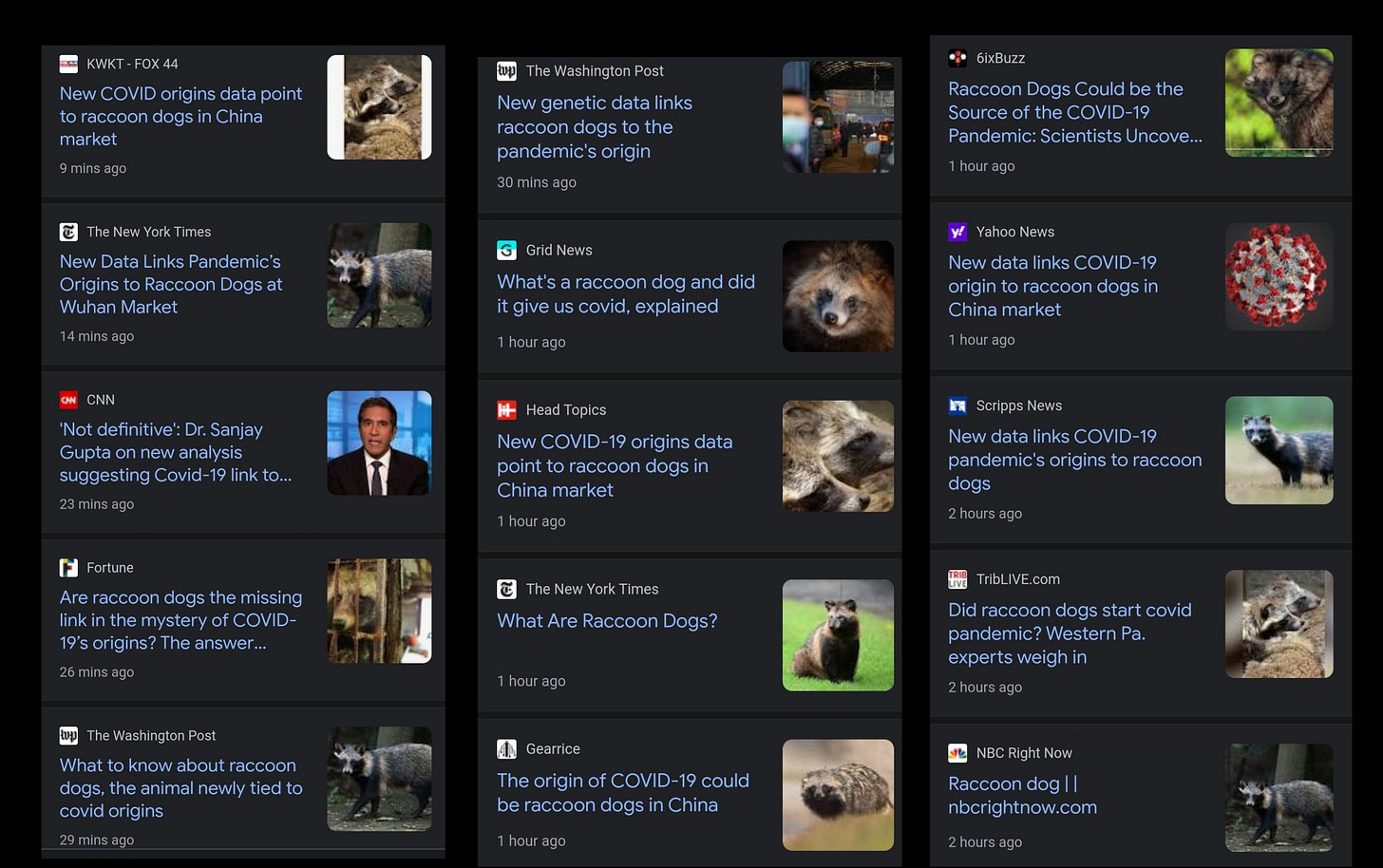



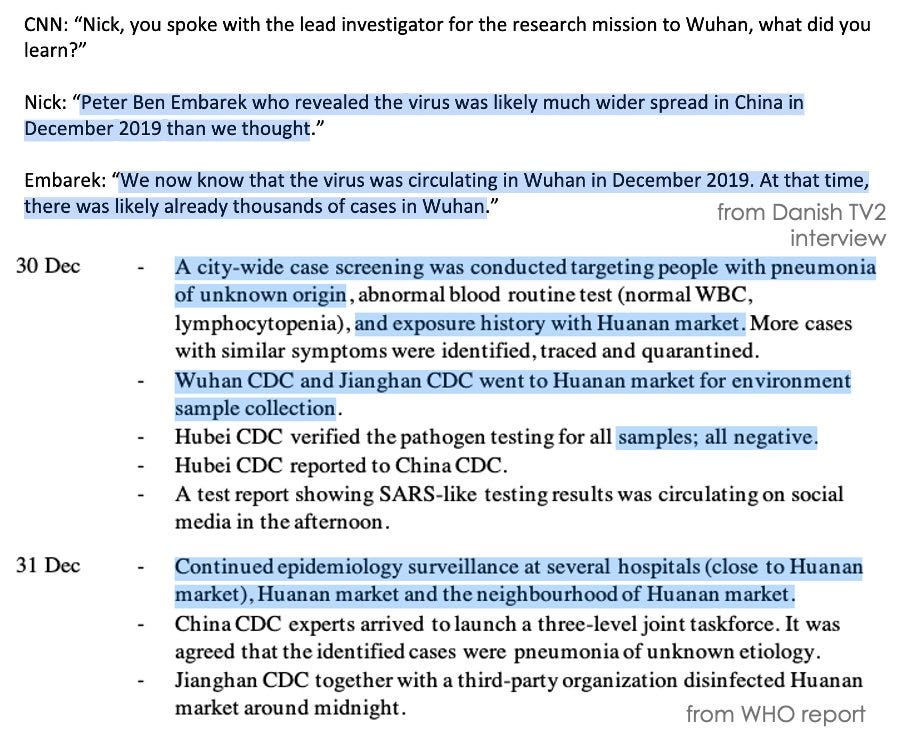
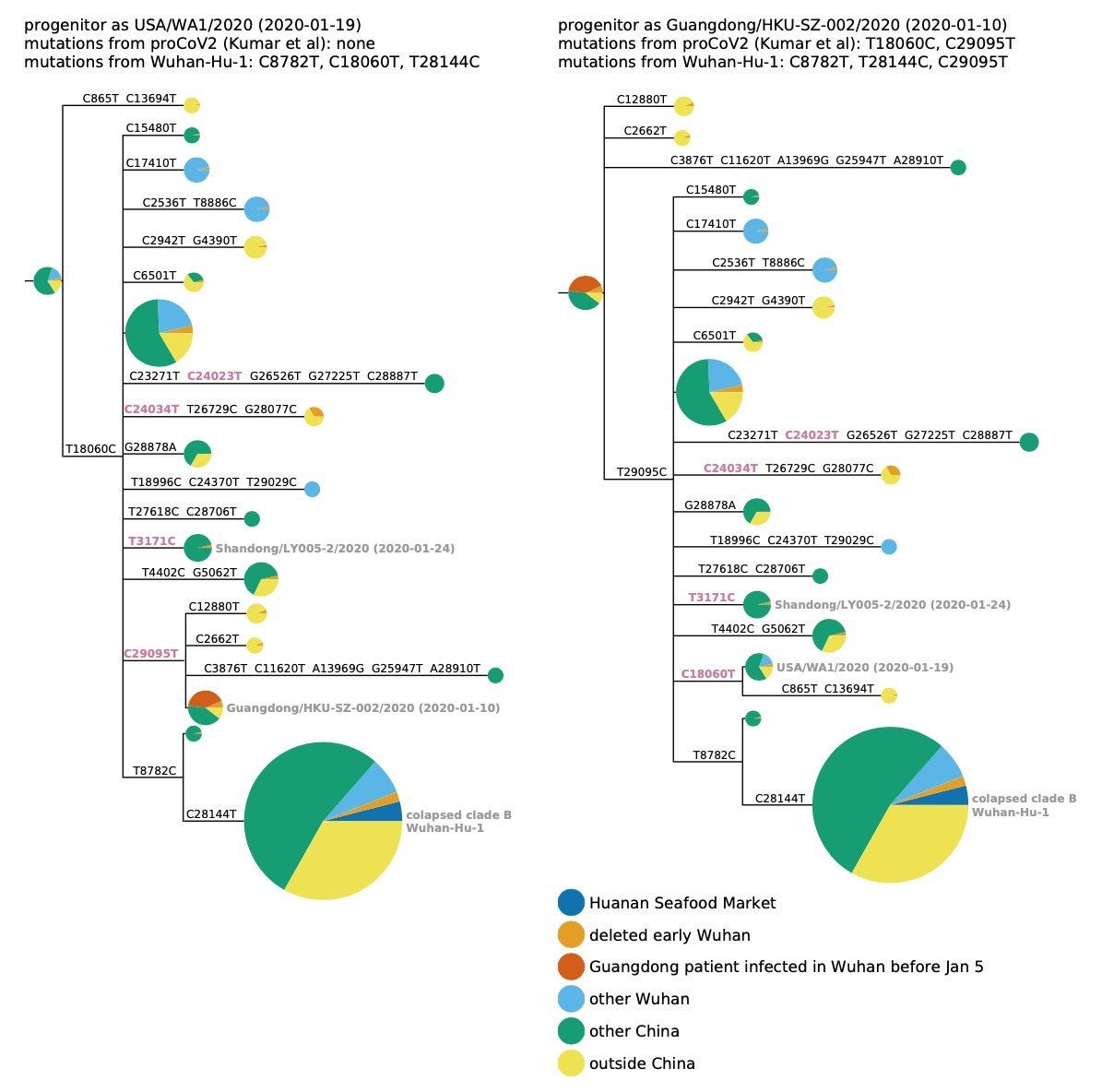
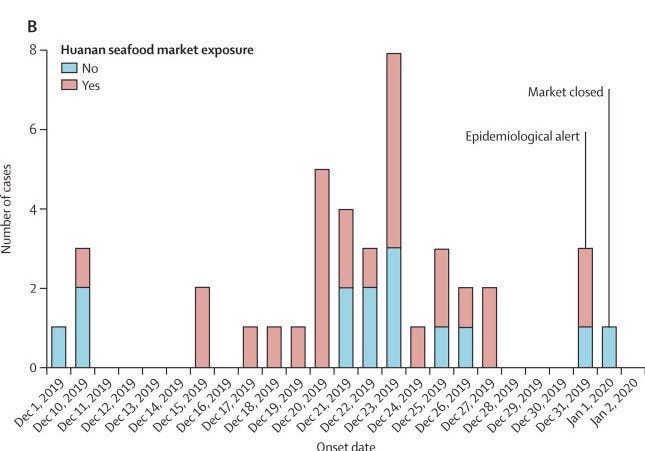




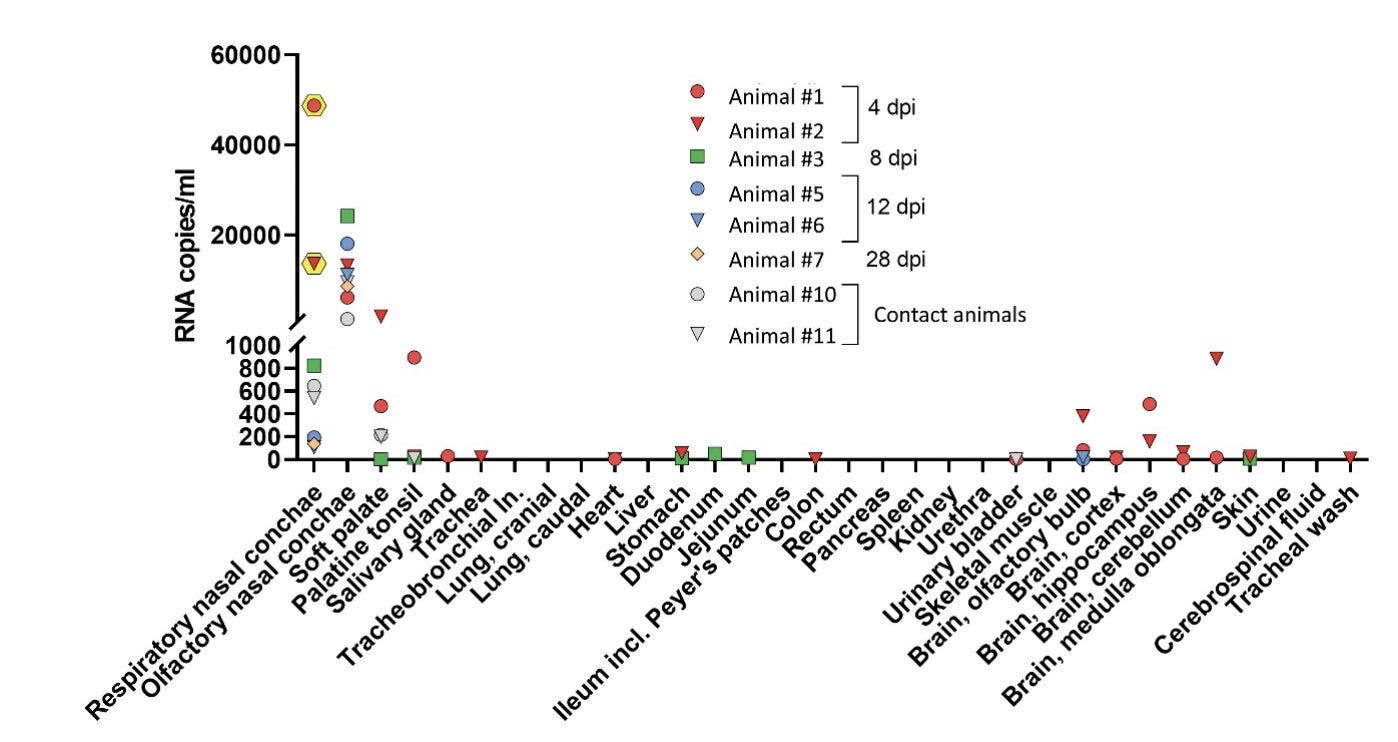
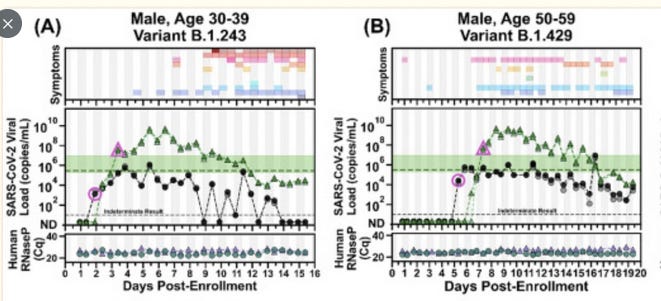





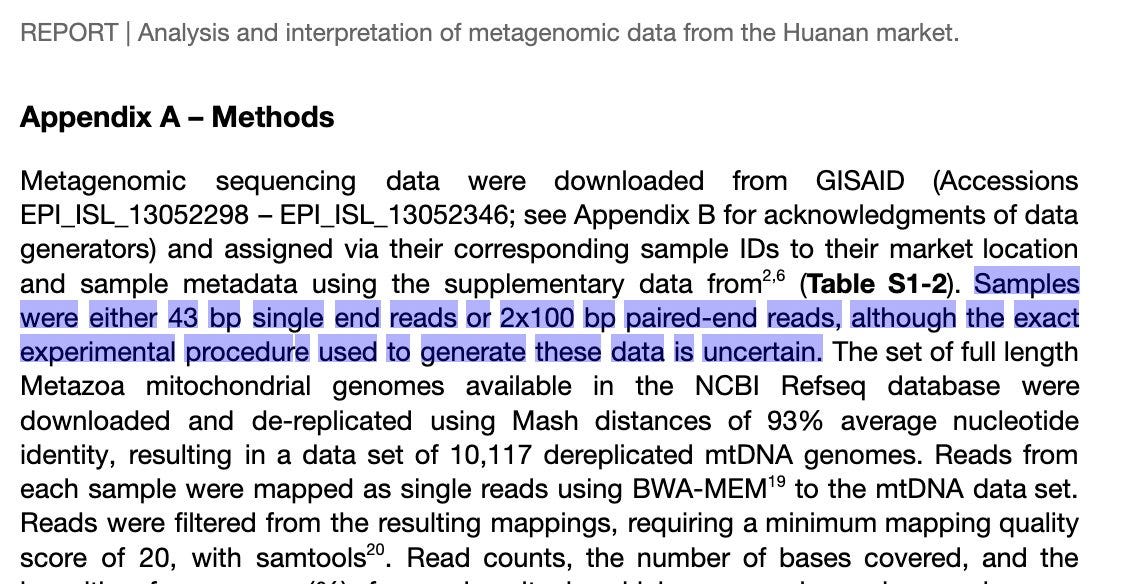
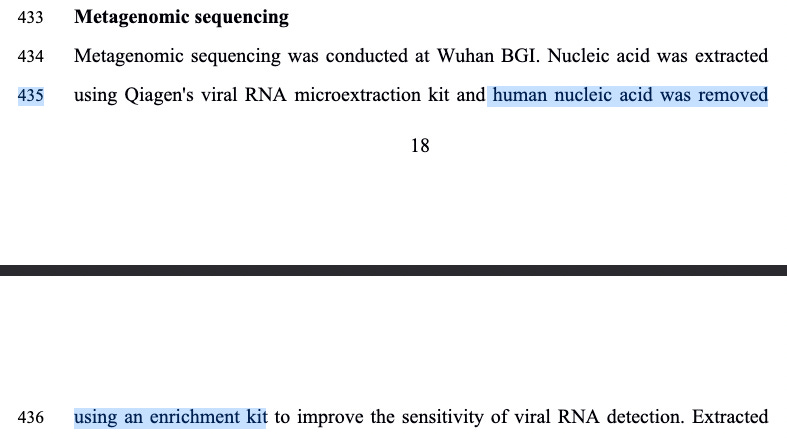



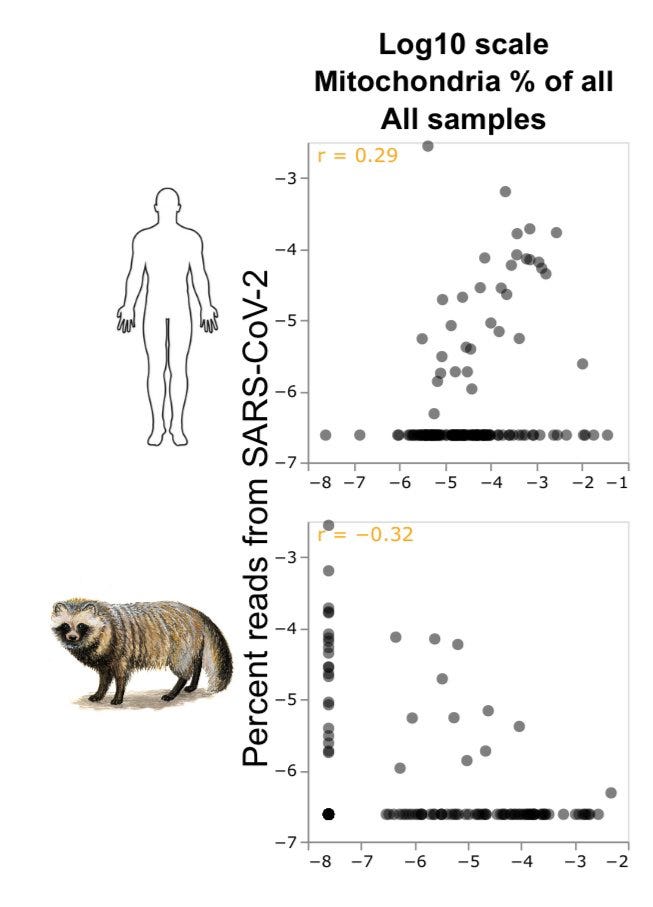


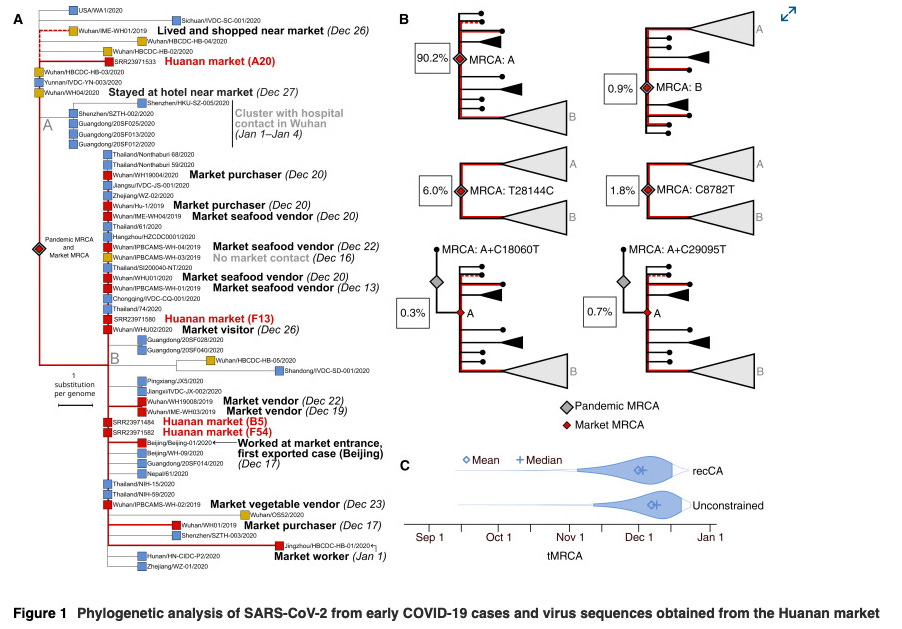















I'm out of words.
The Liu et ag (Gao) paper, which looked at reads not some arbitrary contigs, now shows that the "raccoon dog" sample (Env_0576/Q61) contains mostly normal dog, not raccoon dog reads. What the f**k is going on here?
http://chinaxiv.org/abs/202303.10351
also, as always, Gilles Demaneuf is excellently informed also about raccoon dog sales at HSM:
https://twitter.com/gdemaneuf/status/1638615240316428289?s=20